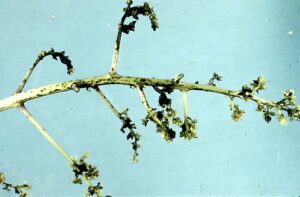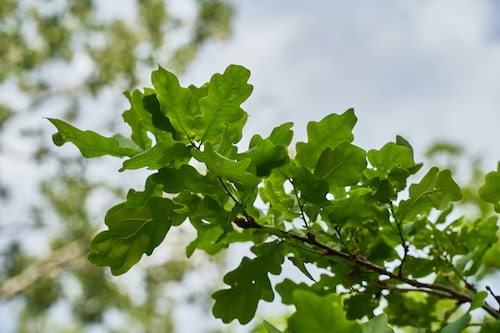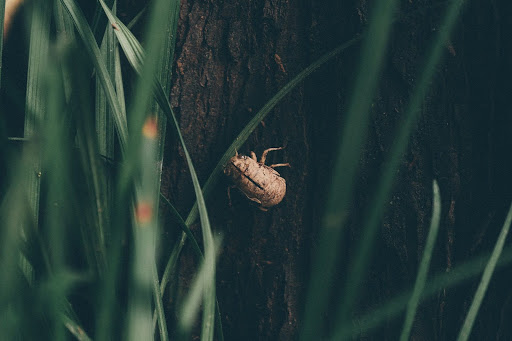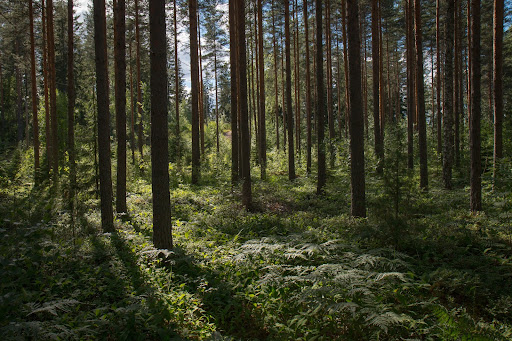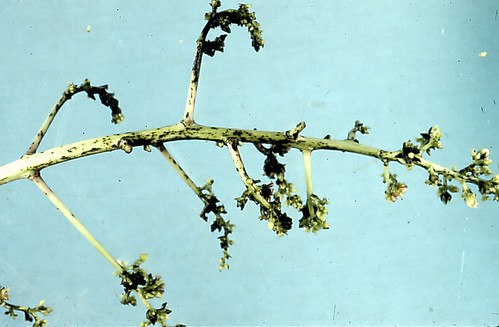
Date March 09, 2023
In the North Texas area, one can witness numerous trees infected by a common fungal disease called anthracnose, a group of related fungi producing dark leaf lesions. It may also result in cankers and sunken sores on stems and twigs in extreme circumstances.
These lesions frequently develop pink clusters of spores or reproductive cells covering their center, especially in humid, warm weather. Infected leaves often exhibit distortion, cupping, or curling. Mature leaves develop tan to dark brown patches but do not become cupped or deformed. In just a few days, anthracnose may transform a stunning crop into rotting garbage.
Existence and Growth of Anthracnose Disease
Image via Flickr by Plant pests and diseases
Anthracnose disease thrives on infected plant debris, seeds, and soil, which act as the perfect host. Moisture with temperatures between 75 and 85 degrees Fahrenheit is most suitable for the germination of this disease. Young leaves and shoots are more prone to infection and often exhibit distortion, cupping, or curling on ash, maple, and oak trees. Mature leaves have a high resistance level and develop tan to dark brown patches but do not become cupped or deformed. The lower and inner branches of the tree frequently have the worst leaf symptoms, though they can also spread upward through the canopy.
Spores are spread to emerging leaves in the spring by wind or splattered by water over short distances. The spreading ceases when the weather is dry, and new leaves replace those that have fallen off. During the cool and rainy season, spores develop inside the leaf spots and disperse across the tree canopy. Even in summer, any tree growing a fresh bloom of young leaves may sometimes get infected by anthracnose if cool, damp weather strikes. In fact, hornbeam and walnut trees may continue to get infected with anthracnose throughout summer.
Do’s and Don’ts for Treating Anthracnose Infected Plants and Trees
There are a few pointers one must keep in mind while treating plants and trees infected by anthracnose disease:
- Make sure to sweep up and dispose of any fallen leaves before the first snow falls. This will ensure that fungus breeding places are eliminated before spring arrives.
- Remove sick twigs during pruning to promote airflow, light penetration, and tree canopy health.
- Apply liquid copper sprays and sulfur powders when the foliage emerges in the early spring. This should be doneweekly in the mornings, but should not be done with the same frequency during high temperatures.
- Spray neem oil, a natural fungicide, and insecticide at the first indication of spring every 7 to 14 days as a precautionary measure or on a 7-day schedule until the issue is resolved.
- Apply pesticides before the rainy season and continue with multiple applications if damp weather persists.
- Spraying periodically with fungicide spray is a must in areas with tall anthracnose-infected trees where complete coverage is hard to achieve.
- Avoid using seeds from infected plants in case the fungus is widespread.
- Avoid visiting gardens when plants are moist to prevent the infection spread and clean any gardening equipment with bleach and water.
- Trunk injections of systemic fungicides can provide suppression, but not eliminate the disease.
Constant anthracnose issues, especially with large trees that need high-pressure spraying equipment for complete coverage, can be a headache and require professional expertise and approach. Get in touch with our ISA-approved arborists for comprehensive tree care today.
